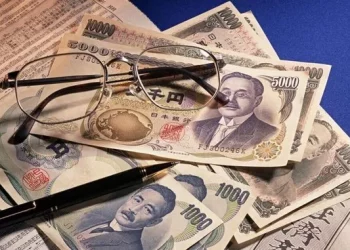The foreign exchange market, also known as Forex or FX, is one of the largest and most liquid financial markets in the world. It involves the trading of currencies, where participants exchange one currency for another at an agreed-upon price, known as the exchange rate. As the global economy becomes more interconnected, individuals and businesses are increasingly engaging in international trade, travel, and investment. One of the key questions often asked in the Forex market is, “How much is $85 Australian dollars in pounds?” This seemingly simple question involves a complex dynamic of exchange rates, economic factors, and market conditions.
In this article, we will break down the process of converting Australian dollars (AUD) into British pounds (GBP) and explore various aspects of the exchange rate between these two currencies. We will also discuss the factors that influence exchange rates and provide you with practical insights on how to manage currency conversions when dealing with international finance.
Understanding Exchange Rates
Before answering the question directly, it’s important to understand what exchange rates are and how they work. An exchange rate is the value of one currency in terms of another. For instance, if the exchange rate between the Australian dollar (AUD) and the British pound (GBP) is 0.53, this means that one Australian dollar is equivalent to 0.53 British pounds. In simple terms, the exchange rate tells you how much one currency is worth relative to another.
Exchange rates fluctuate continuously due to various factors, including economic conditions, interest rates, inflation, geopolitical events, and market speculation. This makes it important to check the current exchange rate when you need to convert currencies. There are two types of exchange rates:
Spot Exchange Rate: This is the current exchange rate for immediate transactions. It reflects the price of a currency pair that is settled “on the spot,” typically within two business days.
Forward Exchange Rate: This is an exchange rate agreed upon today but applied to a transaction that will occur in the future. It is often used by businesses or investors who want to hedge against future currency fluctuations.
Current Exchange Rate Between AUD and GBP
As of the latest available data, the exchange rate between the Australian dollar (AUD) and the British pound (GBP) hovers around 0.53. This means that for every 1 Australian dollar, you would receive 0.53 British pounds. However, it is important to note that exchange rates fluctuate continuously, so this rate may change depending on market conditions. To determine how much $85 Australian dollars (AUD) is in British pounds (GBP), we simply need to multiply the amount of AUD by the exchange rate.
Amount in GBP=Amount in AUD×Exchange Rate
Using the current exchange rate of 0.53:
85 AUD×0.53=45.05 GBP
Therefore, $85 Australian dollars is approximately 45.05 British pounds, based on the exchange rate of 0.53. Keep in mind that this is an approximate value, and the actual amount you receive may vary depending on factors such as fees, commissions, and the provider you use for the currency exchange.
Factors Influencing the AUD to GBP Exchange Rate
The exchange rate between two currencies like the Australian dollar and the British pound is influenced by a wide range of economic, political, and market factors. These include:
1. Interest Rates
Interest rates set by central banks are one of the most significant factors that impact exchange rates. When the Reserve Bank of Australia (RBA) or the Bank of England (BoE) adjusts their benchmark interest rates, it can have a direct effect on the value of their respective currencies. For example, if the RBA raises interest rates, the Australian dollar may appreciate as investors seek higher returns in Australia. Similarly, a rise in the Bank of England’s interest rates could strengthen the British pound.
2. Inflation Rates
Inflation rates also play a key role in determining the strength of a currency. Generally, countries with lower inflation rates tend to have stronger currencies because their purchasing power remains more stable over time. If Australia’s inflation rate is lower than the UK’s, the Australian dollar may be perceived as a more attractive currency, leading to a higher exchange rate for the AUD against the GBP.
3. Economic Performance
The overall economic performance of a country impacts its currency’s value. Strong economic growth in Australia can lead to an appreciation of the Australian dollar, while a weak economy can cause the currency to depreciate. Similarly, strong economic data from the UK can cause the British pound to appreciate against other currencies.
4. Commodity Prices
Australia is a major exporter of commodities such as iron ore, coal, and natural gas. As a result, the Australian dollar is often correlated with commodity prices. When commodity prices rise, it can boost Australia’s export revenues, strengthening the Australian dollar. On the other hand, if commodity prices fall, the Australian dollar may weaken. In contrast, the British pound is less influenced by commodity prices.
5. Political Stability and Geopolitical Events
Political stability and geopolitical events can cause fluctuations in currency values. A change in government, political uncertainty, or tensions in international relations can lead to market volatility, which in turn affects exchange rates. For example, the UK’s decision to leave the European Union (Brexit) caused significant volatility in the British pound, leading to sharp fluctuations in the AUD to GBP exchange rate.
6. Market Speculation
Foreign exchange markets are heavily influenced by speculation. Traders buy and sell currencies based on their expectations of future economic conditions, interest rate changes, or political developments. As a result, market sentiment can drive short-term fluctuations in the exchange rate between the Australian dollar and the British pound.
How to Convert AUD to GBP
There are several methods for converting Australian dollars (AUD) into British pounds (GBP), and each method may have different exchange rates, fees, and commissions. Here are some common ways to exchange currencies:
1. Banks
Most banks offer currency exchange services for their customers. While banks are generally reliable, they often provide exchange rates that are less favorable than those offered by other methods, such as online platforms or currency exchange services. Additionally, banks may charge a commission or service fee for the transaction.
2. Currency Exchange Services
Currency exchange services, such as those available at airports, hotels, or dedicated exchange bureaus, are another option for converting AUD to GBP. While these services can be convenient, they often offer less competitive exchange rates and higher fees compared to other methods. It’s important to compare rates before using these services.
3. Online Currency Exchange Platforms
There are numerous online platforms and apps that allow users to exchange currencies at competitive rates. Some popular platforms include Revolut, Wise (formerly TransferWise), and PayPal. These services often offer more favorable exchange rates than banks or physical exchange bureaus and are ideal for individuals who want to send money internationally or convert currencies for personal use.
4. ATMs
Using an international ATM to withdraw foreign currency is another method of converting AUD to GBP. Many banks have partnerships with foreign ATM networks, which can offer competitive exchange rates. However, it’s important to check if your bank charges foreign transaction fees or ATM withdrawal fees when using international ATMs.
Fees and Charges
When exchanging currencies, it’s important to be aware of the fees and charges that may apply. These can include:
Transaction Fees: Many currency exchange services charge a transaction fee or a commission for converting currencies. This fee can vary depending on the provider and the amount being exchanged.
Exchange Rate Markups: Some services, including banks and exchange bureaus, offer exchange rates that are less favorable than the market rate. This markup can result in you receiving fewer British pounds for your Australian dollars.
ATM Fees: When withdrawing foreign currency from an ATM, your bank may charge an international ATM fee or a foreign transaction fee. It’s a good idea to check with your bank to understand these charges before making withdrawals.
Service Fees: Some online platforms or currency exchange services charge a flat service fee or a percentage of the total transaction amount. Be sure to review the terms and conditions before using any platform.
Conclusion
To summarize, $85 Australian dollars is approximately equivalent to 45.05 British pounds, based on the current exchange rate of 0.53. However, exchange rates fluctuate continuously due to various economic, political, and market factors. It’s essential to consider these factors and shop around for the best rates when converting currencies, as fees and exchange rate markups can significantly impact the amount you receive.
For individuals or businesses engaging in international transactions, understanding how exchange rates work and keeping an eye on market trends is crucial. Whether you’re traveling, sending money abroad, or making investments, staying informed about currency fluctuations and selecting the right exchange method can help you get the most value for your money.
By considering the various methods of currency conversion and factoring in any fees or charges, you can ensure that you get the best possible deal when exchanging Australian dollars for British pounds or any other foreign currency.
Related Topics:


























